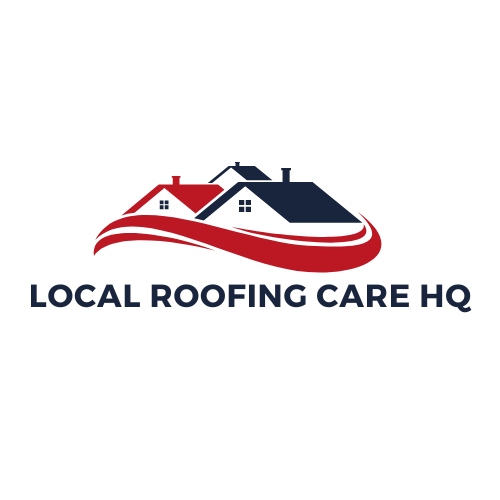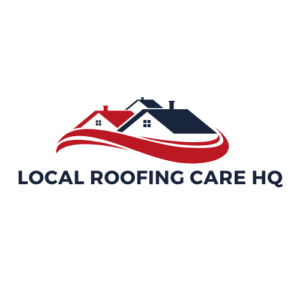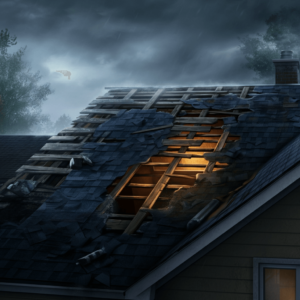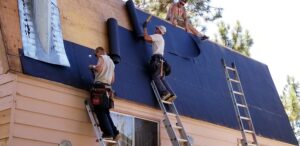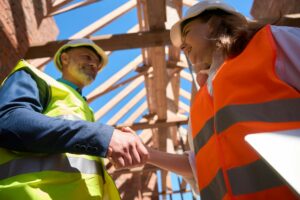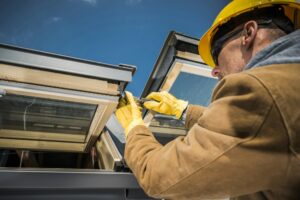When evaluating roofing options, **metal roofs** are increasingly recognized as a premier choice for homeowners. Their remarkable **durability**, **energy efficiency**, and **low maintenance** requirements render them a prudent investment for residential properties.
This article will examine the **benefits of metal roof installation**, encompassing aspects such as **fire resistance** and **eco-friendliness**, while also addressing essential considerations prior to making a decision. Furthermore, we will provide a comprehensive overview of the **installation process** and offer critical **maintenance tips** to ensure the longevity of your new roof.
Explore the content to understand why **metal roofs** may be an ideal solution for your home.
Why Choose Metal Roof Installation?
Selecting metal roof installation presents homeowners with numerous advantages, rendering it a prudent investment for home improvement.
Metal roofing systems are well-known for their durability and longevity, offering a robust barrier against severe weather conditions while enhancing the aesthetic appeal of residential architecture.
Furthermore, these systems significantly enhance energy efficiency, leading to substantial long-term savings on energy expenses. The market has observed a rising trend toward metal roofs due to their capacity to increase property value and curb appeal, making them an exceptional choice for homeowners aiming to enhance their home equity or resale potential.
1. Durability and Longevity
Metal roofs are widely recognized for their exceptional durability and longevity, positioning them as an ideal choice for homeowners seeking reliable roofing materials. Unlike traditional roofing options, metal shingles are capable of withstanding severe weather conditions, including heavy rainfall, strong winds, and hail, thereby ensuring that the investment provides enduring protection for the home.
This remarkable structural strength results in fewer repair needs and a significantly longer lifespan compared to alternative materials. Additionally, the weather resistance of metal roofs not only prevents leaks but also mitigates the risk of mold and rot, which are common issues associated with less durable roofing systems.
Many contemporary metal roofs are engineered to meet stringent building codes, thereby ensuring superior safety and performance. Their low maintenance requirements facilitate a hassle-free experience for homeowners, allowing them to enjoy peace of mind without the frequent upkeep typically necessitated by other roofing options. Consequently, metal roofs represent a prudent, long-term investment.
2. Energy Efficiency
The energy efficiency of metal roofs presents a significant advantage, particularly in residential roofing applications. Their effective insulation and reflective properties can result in substantial energy savings.
Metal roofs are designed to reflect solar radiant heat, which aids in maintaining cooler indoor temperatures during hot months and reduces dependence on air conditioning.
By incorporating energy-efficient materials, homeowners can lower their energy costs while enhancing the overall comfort of their living environments. Additionally, these roofing solutions often demonstrate impressive insulation values, thereby minimizing the need for heating during colder months and contributing to a more stable indoor climate.
Furthermore, many homeowners may find potential tax incentives aimed at promoting the use of sustainable building materials, providing an added layer of financial relief.
By opting for metal roofs, individuals are not only making a prudent investment for immediate savings but also taking a proactive step toward climate resilience, fostering environmental benefits that support a sustainable future.
3. Low Maintenance
One of the notable features of metal roofs is their minimal maintenance requirements, which can lead to significant long-term cost savings for homeowners. Unlike traditional roofing materials, metal roofs do not necessitate frequent repairs or replacements, allowing homeowners to maintain peace of mind regarding the upkeep of their roofs.
This convenience not only reduces the need for regular roof inspections but also considerably lowers associated costs. Studies indicate that metal roofs can last up to 50 years or more, in contrast to the typical 20-30 year lifespan of asphalt shingles.
This extended longevity results in fewer investments in repairs and replacements over time. Moreover, the structural integrity of metal roofs often withstands harsh weather conditions more effectively than traditional options, leading to fewer insurance claims and unexpected financial burdens, thereby enhancing their appeal as a cost-effective solution for homeowners.
4. Fire Resistance
Fire resistance is a critical consideration in the selection of roofing materials, and metal roofs offer superior protection against fire hazards, thereby enhancing home safety and potentially reducing insurance costs. Due to their non-combustible nature, metal roofs significantly diminish the risk of fire damage, providing homeowners with added peace of mind.
In regions susceptible to wildfires, investing in fire-resistant roofing is particularly advantageous, as it safeguards homes against embers and flames. Similarly, in areas prone to frequent droughts, the significance of durable materials that can endure extreme conditions cannot be overstated.
Metal roofs not only align seamlessly with modern architectural designs due to their sleek aesthetic but also confer long-term financial benefits by potentially lowering homeowners’ insurance premiums.
Ultimately, selecting materials with fire-resistant properties is not merely a matter of regulatory compliance; it is essential for ensuring the protection and stability of one’s investment.
5. Environmentally Friendly
Metal roofs are increasingly recognized as environmentally friendly alternatives in the residential roofing sector, contributing to sustainability efforts due to their recyclability and reduced energy consumption. Environmentally conscious homeowners value the longevity of metal roofs, which decreases the need for frequent replacements and minimizes waste.
These roofs are often constructed from recycled materials, demonstrating a commitment to eco-friendly practices from the outset. They possess the ability to reflect solar heat, resulting in lower cooling costs during warmer months, thereby enhancing energy efficiency.
The production processes associated with metal roofs are designed with sustainability as a priority, typically consuming less energy compared to some traditional roofing materials. This positions them as an appealing choice for individuals looking to reduce their carbon footprint while benefiting from durable roofing solutions.
At the conclusion of their life cycle, metal roofs can be fully recycled, facilitating the creation of new products without contributing to landfill waste.
Factors to Consider Before Installing a Metal Roof
Before selecting metal roof installation, it is imperative to evaluate several factors to ensure alignment with your home improvement objectives and budgetary constraints.
Key considerations include the local climate, as different roofing materials may exhibit varying performance under specific weather conditions.
Additionally, the overall aesthetic appeal and design options available for your property should be carefully assessed.
1. Climate and Weather Conditions
The local climate and prevailing weather conditions are fundamentally important in determining the appropriateness of various metal roofing types for a residence. It is essential to understand how factors such as seasonal variations, temperature fluctuations, and precipitation can impact the durability of roofing materials, thereby enabling well-considered choices.
For example, in regions that experience significant snowfall, opting for a roofing system designed to facilitate snow shedding can substantially reduce the risk of leaks and structural damage. Conversely, in areas susceptible to heavy rainfall, it is crucial to emphasize weatherproofing features to avert water infiltration.
Roofing materials with high insulation values can contribute to the regulation of indoor temperatures, enhancing a property’s energy efficiency while minimizing heat loss. A thorough assessment of local environmental risks enables homeowners to select a metal roofing type that optimizes leak prevention, thereby ensuring long-term resilience and performance in response to the varying demands posed by climatic conditions.
2. Cost and Budget
Cost and budget considerations are essential when planning for metal roof installation, as expenses can vary significantly based on materials and labor. Although the initial costs may be higher compared to traditional roofing options, the long-term return on investment stemming from durability and energy savings can render metal roofs a more cost-effective choice.
Several factors influence the total expense associated with this upgrade, including the selection of high-quality materials, which can enhance longevity and resistance to weather damage. Labor rates may fluctuate based on the region and the complexity of the installation, as skilled professionals often command a premium for their expertise.
Additionally, budget-conscious homeowners should consider the installation time, as this can impact overall project costs. By viewing the metal roof not merely as an immediate purchase but as a strategic investment, homeowners can recognize the financial advantages gained from reduced maintenance requirements and improved energy efficiency over the years.
3. Style and Aesthetic
The style and aesthetic appeal of metal roofs are pivotal factors influencing homeowners’ choices, as they can significantly enhance both property value and curb appeal. With an array of design options, colors, and finishes available, metal roofing can be customized to accommodate various architectural styles, thereby demonstrating versatility suitable for any residence.
This level of customization allows homeowners to align their roofing selections with community standards, ensuring that their properties integrate seamlessly with the surrounding environment.
- Options include classic standing seam designs as well as sleek modern profiles, enabling a perfect match for any facade.
- Opting for vibrant colors or unique textures can create striking contrasts that enhance the visual appeal of a neighborhood.
Investing in aesthetically pleasing roofing not only caters to personal preferences but also has the potential to substantially impact home equity. This makes it a prudent choice for those seeking to improve the marketability of their property.
The Metal Roof Installation Process
The installation process for metal roofing is a complex procedure that necessitates skilled labor and a comprehensive understanding of roofing systems to ensure optimal outcomes.
Each step, from the removal of existing roofing materials to the secure installation of metal sheets, is essential for achieving a roof that is both leak-proof and durable. This meticulous approach ultimately provides long-lasting protection for the home.
1. Removing Old Roofing Materials
The initial phase of the metal roof installation process entails the systematic removal of existing roofing materials, a critical step in establishing a robust foundation for the new metal roof. This procedure not only prepares the surface but also facilitates a thorough assessment of the underlying structure to identify any necessary repairs.
By conducting a comprehensive roof inspection during this stage, potential weaknesses or damage can be pinpointed, which may compromise the longevity and performance of the new installation. It is imperative to prioritize structural integrity, as any pre-existing issues could result in significant repair costs in the future or undermine the effectiveness of the new roofing system.
Ensuring that every layer of the old roofing is meticulously removed creates an optimal environment for the secure installation of the new metal roof. This approach enhances durability and provides superior protection against environmental elements. Such diligence during the initial phase establishes a solid foundation for a roof designed to withstand the test of time.
2. Installing Underlayment and Flashing
After the removal of the old roofing materials, the subsequent critical step involves the installation of underlayment and flashing, which function as a protective barrier against water infiltration. This weatherproofing layer is essential for enhancing the longevity and performance of the metal roof.
Underlayment serves as an additional shield, providing an extra layer of defense against moisture intrusion, while flashing effectively directs water away from critical joints and penetrations, such as chimneys and vents. Collectively, these components play a significant role in mitigating the risk of leaks, thereby ensuring the integrity of the roofing system over time.
The utilization of high-quality underlayment materials can also enhance energy efficiency by reflecting heat and reducing cooling costs, which aligns with broader environmental sustainability objectives. Proper installation expertise is paramount at this stage, as it establishes the foundation for the roof’s overall effectiveness in withstanding the elements.
3. Placing the Metal Sheets
The placement of metal sheets is a critical stage in the installation process, necessitating precision and expertise to ensure a secure fit that contributes to the longevity of the roof. Proper alignment and fastening of the metal sheets are essential for creating a leak-proof barrier and enhancing the structural integrity of the roof.
Skilled labor is essential during this phase, as their experience significantly impacts the effectiveness of various roofing techniques, including lap joints, hidden fasteners, and mechanical seaming. The use of appropriate tools, such as snips, rollers, and electric roofing nailers, can considerably reduce installation time while ensuring optimal placement.
Regardless of whether the project involves residential steel roofs or commercial aluminum structures, the quality of workmanship directly affects durability, weather resistance, and overall performance. This highlights the importance of employing trained professionals for metal sheet installations.
4. Securing and Finishing the Roof
The final step in the installation process of a metal roof involves securing and finishing the roof, ensuring that each component is properly in place and functions effectively. This phase is essential for achieving a completed project that complies with building codes and provides homeowners with a robust warranty for future protection.
Addressing this phase adequately can significantly enhance the long-term durability of the roof, ultimately safeguarding the home against potential weather-related damage. Homeowners can find reassurance in knowing that their investment is protected not only by the quality of materials utilized but also by adherence to contemporary roofing trends.
A well-secured roof often positively impacts insurance policies, potentially resulting in reduced premiums or more favorable coverage terms.
Consequently, ensuring quality assurance throughout the installation process not only strengthens home safety but also allows homeowners to have peace of mind regarding warranty claims and insurance benefits in the future.
Maintaining Your Metal Roof
Maintaining a metal roof is crucial for ensuring its longevity and optimal performance over time.
Regular maintenance and inspections can help identify potential issues before they develop into more significant problems, enabling homeowners to maximize the benefits of their investment for many years.
1. Regular Inspections
Conducting regular inspections is a fundamental aspect of maintaining a metal roof, as it enables homeowners to identify any wear or damage at an early stage. Scheduled inspections are crucial in ensuring that the roof remains leak-proof and functional throughout its lifespan.
During these evaluations, qualified professionals will assess the roof for rust, loose panels, and any indications of potential drainage issues. Engaging trained technicians for thorough assessments not only extends the lifespan of the roof but also provides peace of mind, knowing that the structure has been meticulously examined by experts.
Investing in routine maintenance strategies can prevent homeowners from incurring costly repairs in the future, thereby enhancing overall property value and ensuring safety.
Prioritizing roof maintenance is essential not only for aesthetic considerations but also for the protection of the entire home.
2. Cleaning and Removing Debris
Cleaning and removing debris from a metal roof is essential for maintaining both its appearance and functionality. The accumulation of leaves, branches, and dirt can lead to corrosion and compromise the structural integrity of the roof over time.
For this reason, implementing consistent maintenance practices is imperative. Homeowners should ideally conduct thorough cleaning at least twice a year, during the spring and fall, to prevent significant accumulation.
This maintenance routine not only enhances the aesthetic value of the property but also contributes to the longevity of the roof. Utilizing a soft-bristle brush or a pressure washer set to a low setting can effectively clear away any buildup without causing damage to the metal surface.
Additionally, applying a protective sealant every few years can enhance corrosion resistance, ensuring that the roof remains functional and visually appealing for many years to come.
3. Addressing Repairs and Damage
Addressing repairs and damage to a metal roof promptly is essential for its maintenance, as neglecting these issues can lead to more significant problems and increased costs in the future. Homeowners should take a proactive approach in identifying and resolving any concerns that arise during inspections.
Common types of damage that may occur include:
- Rust formation
- Loose panels
- Leaking seams
All of which can compromise the roof’s integrity. Effective repair methods may encompass recoating rusted areas, securely fastening any loose panels, and applying sealants to vulnerable seams to prevent water intrusion.
Regular roof inspections are critical, as they enable homeowners to identify such issues early and mitigate the need for extensive repairs. By implementing consistent maintenance strategies, including debris removal and monitoring for signs of wear, homeowners can safeguard their investment and ensure the longevity of their roofing system.
Ultimately, diligent care and prompt action contribute significantly to protecting the home against adverse weather conditions.
Frequently Asked Questions
What are the benefits of metal roof installation for my home?
Metal roof installation offers numerous benefits for your home, including durability, energy efficiency, and increased property value. Metal roofs can last up to 50 years, save on energy costs by reflecting heat, and provide a modern, sleek look for your home.
How does metal roof installation compare to traditional roofing materials?
Metal roofs are much more durable compared to traditional roofing materials like asphalt shingles. They are also more resistant to extreme weather conditions and can withstand heavy winds, rain, and snow. Additionally, metal roofs require less maintenance and have a longer lifespan.
Will metal roof installation increase the value of my home?
Yes, metal roof installation can increase the value of your home. Metal roofs are considered a premium roofing option and can boost the curb appeal and overall value of your property. They are also a popular feature among homebuyers, making your home more attractive to potential buyers.
How does metal roof installation save on energy costs?
Metal roofs have a reflective coating that helps to reflect heat from the sun, keeping your home cooler during hot summer months. This reduces the strain on your air conditioning system and can save you money on energy costs. Additionally, metal roofs can be installed with insulation, further increasing their energy efficiency.
Is metal roof installation a good investment in the long run?
Yes, metal roof installation is a smart investment for your home. While the initial cost may be higher compared to traditional roofing materials, the longevity and durability of metal roofs make them a cost-effective option in the long run. You’ll save on repair and replacement costs, as well as potential savings on energy costs.
Are there any environmental benefits to metal roof installation?
Yes, metal roof installation has several environmental benefits. As mentioned, metal roofs are energy efficient, reducing your home’s carbon footprint. They are also made from recycled materials and can be recycled again at the end of their lifespan, making them a sustainable choice for your home.
